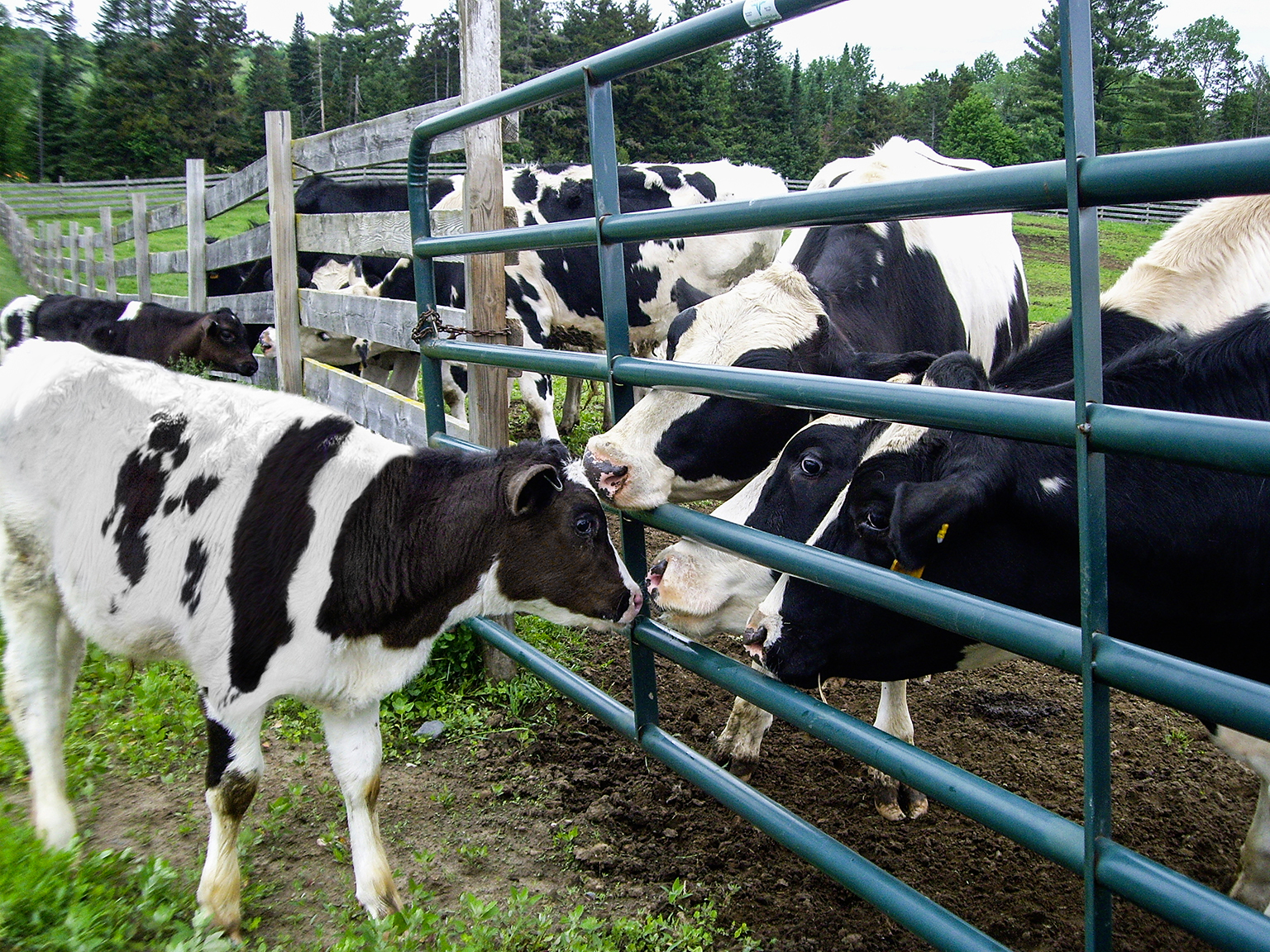5–12 Weeks Old
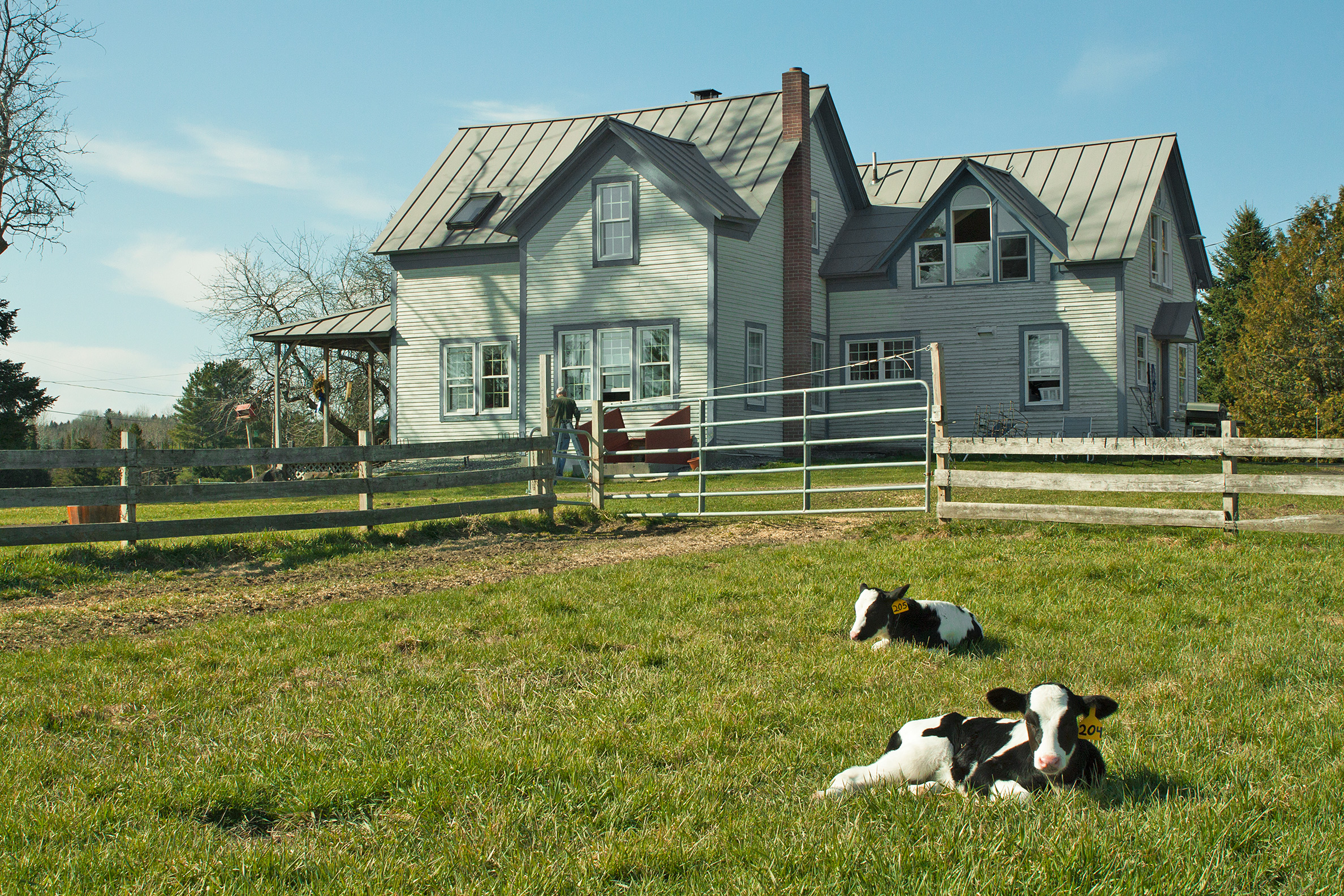
After five weeks, Lima Bean has grown sturdy enough to move out of the barn and into a small enclosed field called a paddock. The paddock near the house is used for calves who are old enough to be out of the calf barn, but who are still drinking milk. A three-sided shelter allows the calves to go in or out of it whenever they want. Lima Bean is so excited by his new surroundings that he jumps and runs all around the paddock. He discovers that grass tastes yummy. He has so much fun that he tires himself out. He has to lie down for a nap.
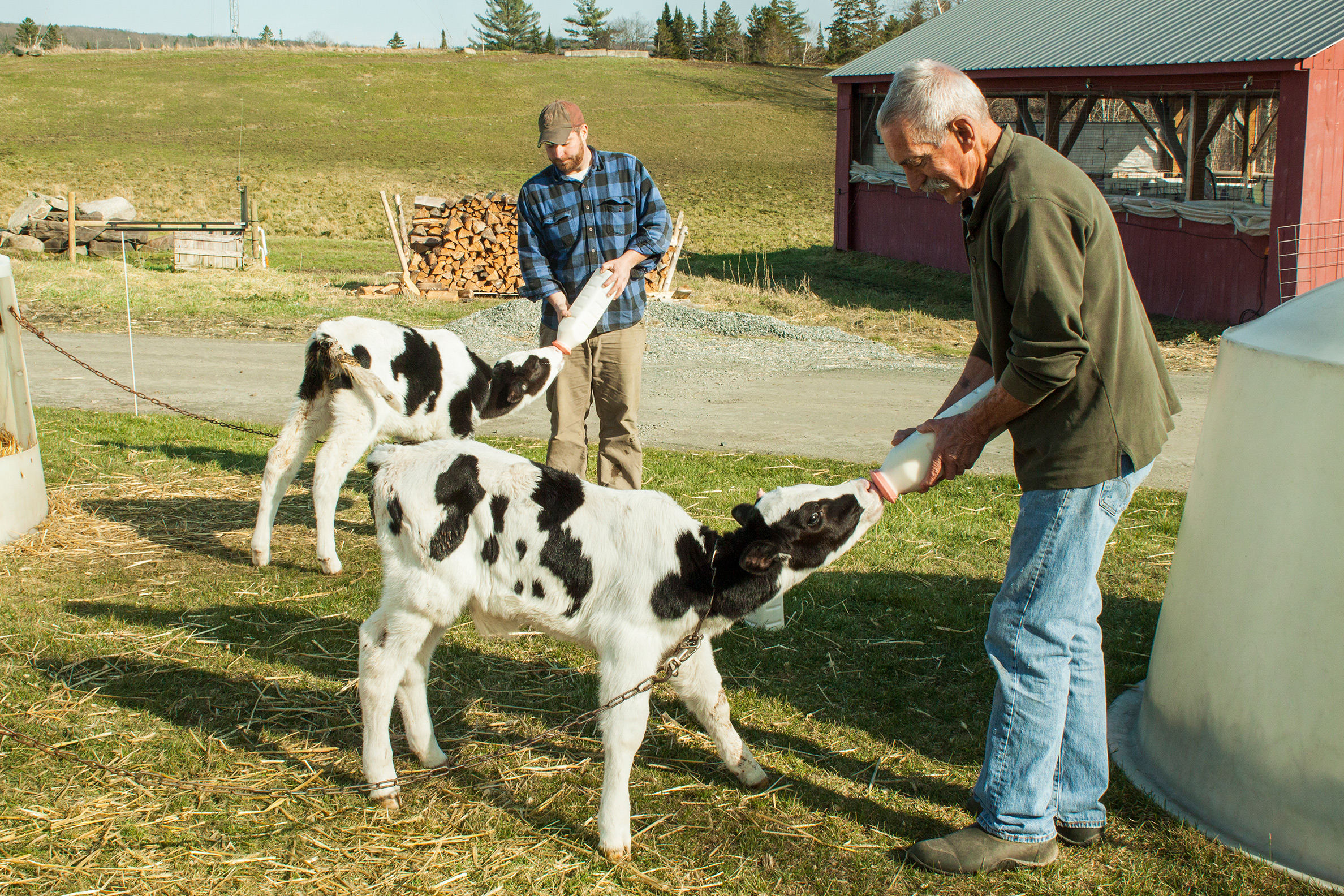
Once the calves move into the paddock, they don’t need their fleece jackets anymore. For the first time, the Nottermanns can see what their calves really look like compared to each other. Lima Bean is a breed called a Holstein. Holsteins are big black-and-white cows best known for producing a lot of milk, but they also produce good meat. A Holstein’s markings are like fingerprints or snowflakes—no two individuals have the same patterns.
Take a look at these two calves. They look very similar to each other, but they have different markings.

To keep the calves from drinking each other’s milk, the farmers chain each one next to his own bucket during feedings. The rest of the time, they run around, play, and nibble on grass.
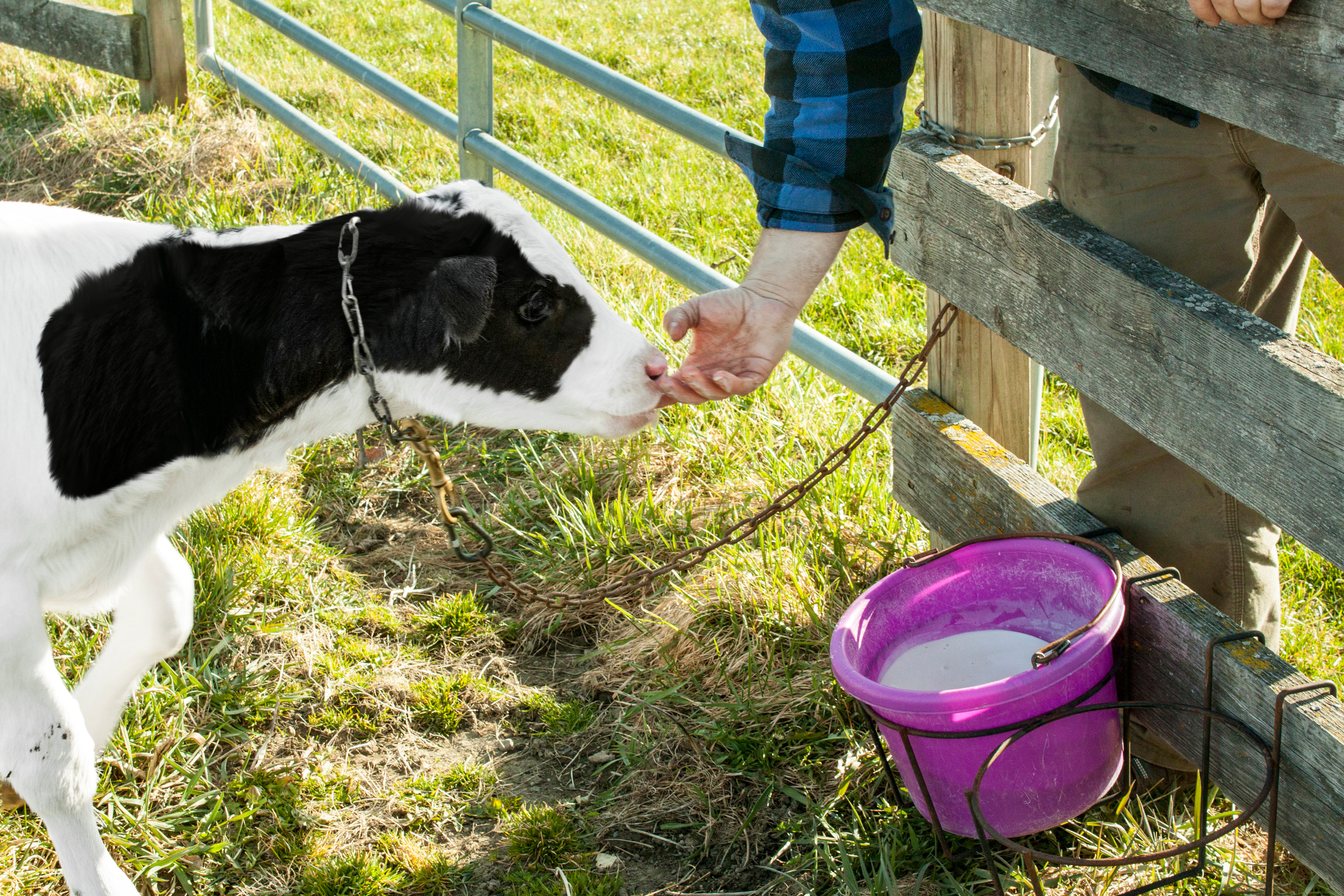
During the first outdoor feeding, Lima Bean is a little nervous. So, Ben offers him his finger to suck on. This encourages Lima Bean to move closer to the bucket of milk. Ultimately, he decides that milk tastes the same outside as it does inside the calf barn, and he drinks.
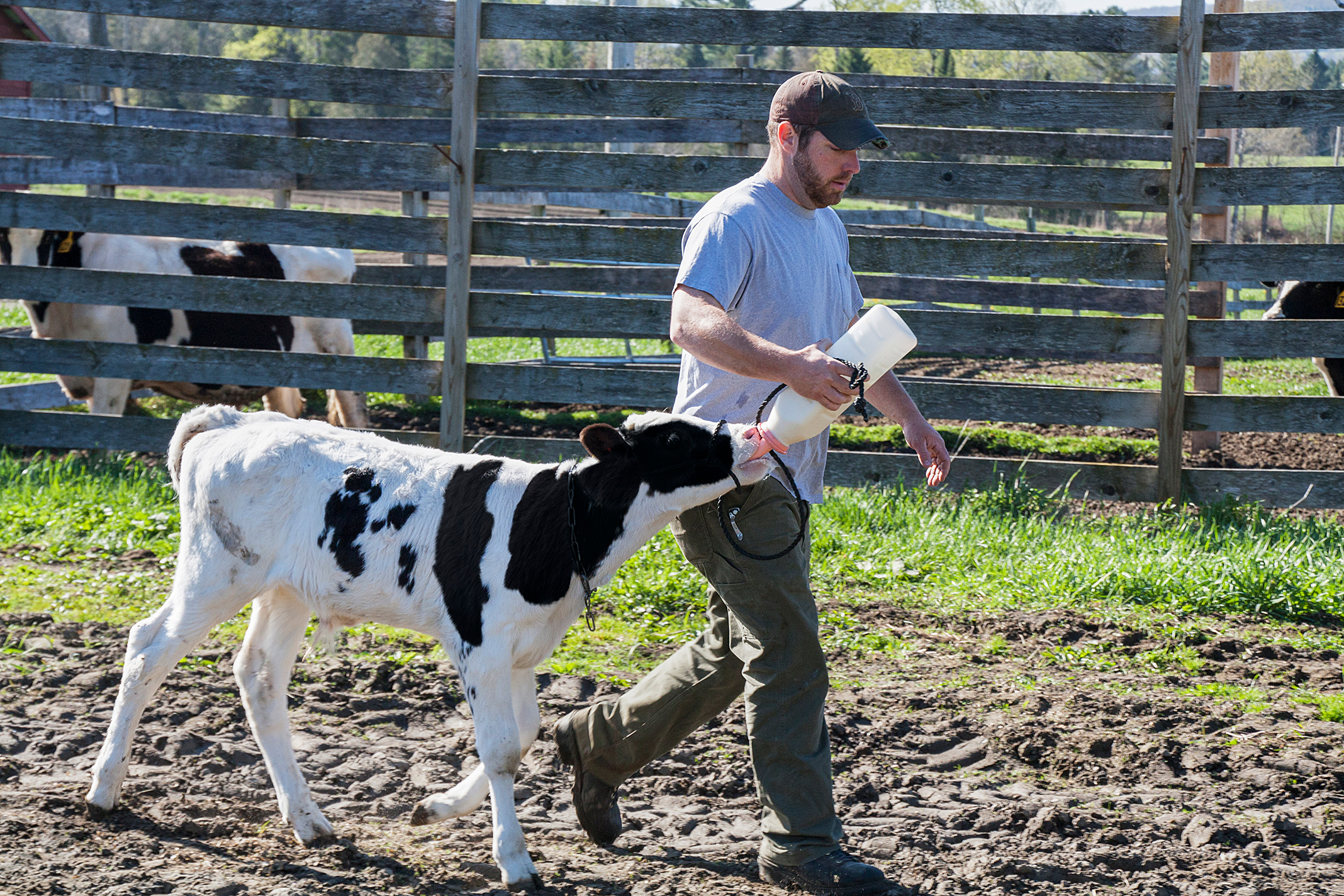
The strong instinct to suck is very useful when young calves need to be moved from one field to another. They willingly walk alongside any person who offers them a bottle, drinking as they go. Ben uses a bottle to move Lima Bean into the paddock. When the calves are older, it is not nearly as easy!
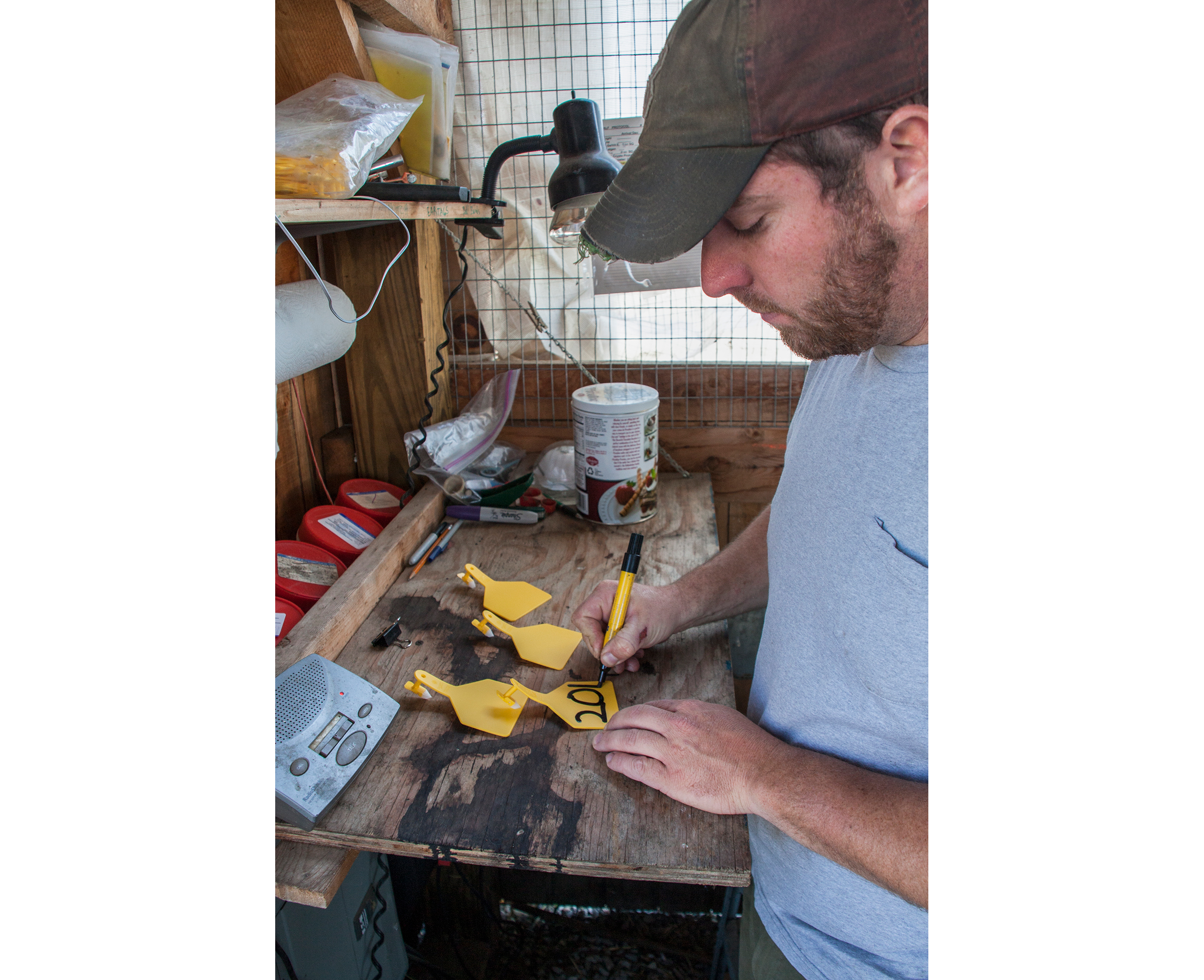
The Nottermanns give all the calves on the farm special names. Lima Bean’s best buddies are Oscar and Sauté. Sauté got his name because he kept trying to jump out of his pen when he was little. Sauté is the French word for “jump.”
Another way to identify animals on a farm is through ear tags. These are large yellow plastic tags that are permanently attached to an animal’s ear. The ear-tagging tool is similar to what is used to pierce a human ear—only much bigger. The calf’s number is written on the tag with permanent marker. A hole is punched in the ear, permitting the post attached to the back of the tag to pass through the ear and into a backing piece. Just like with human ear piercing, it’s uncomfortable at first, but it quickly stops hurting.
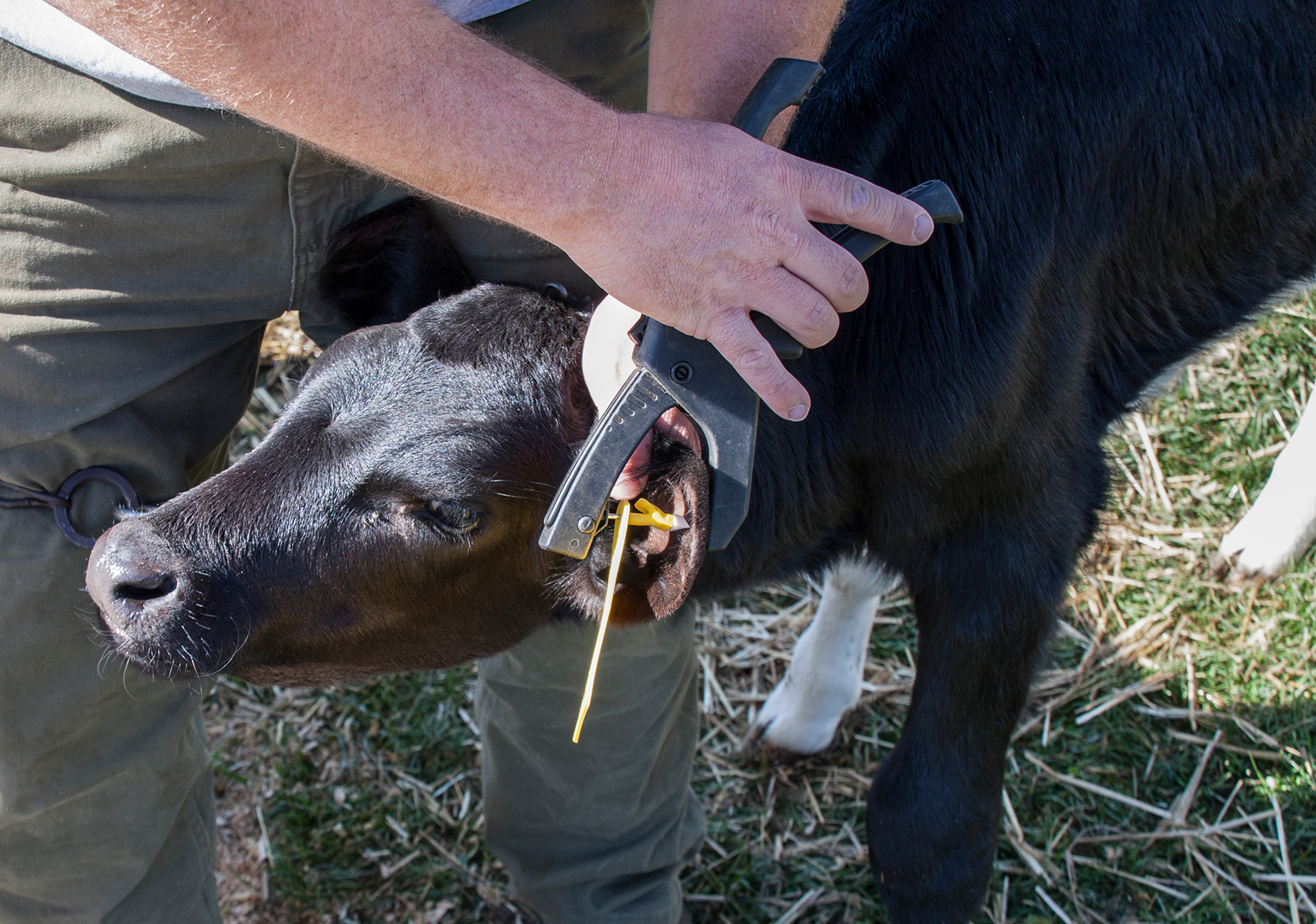
The identification numbers on their ear tags offer a way to record all the information about Lima Bean and all the other calves over the course of their lives.
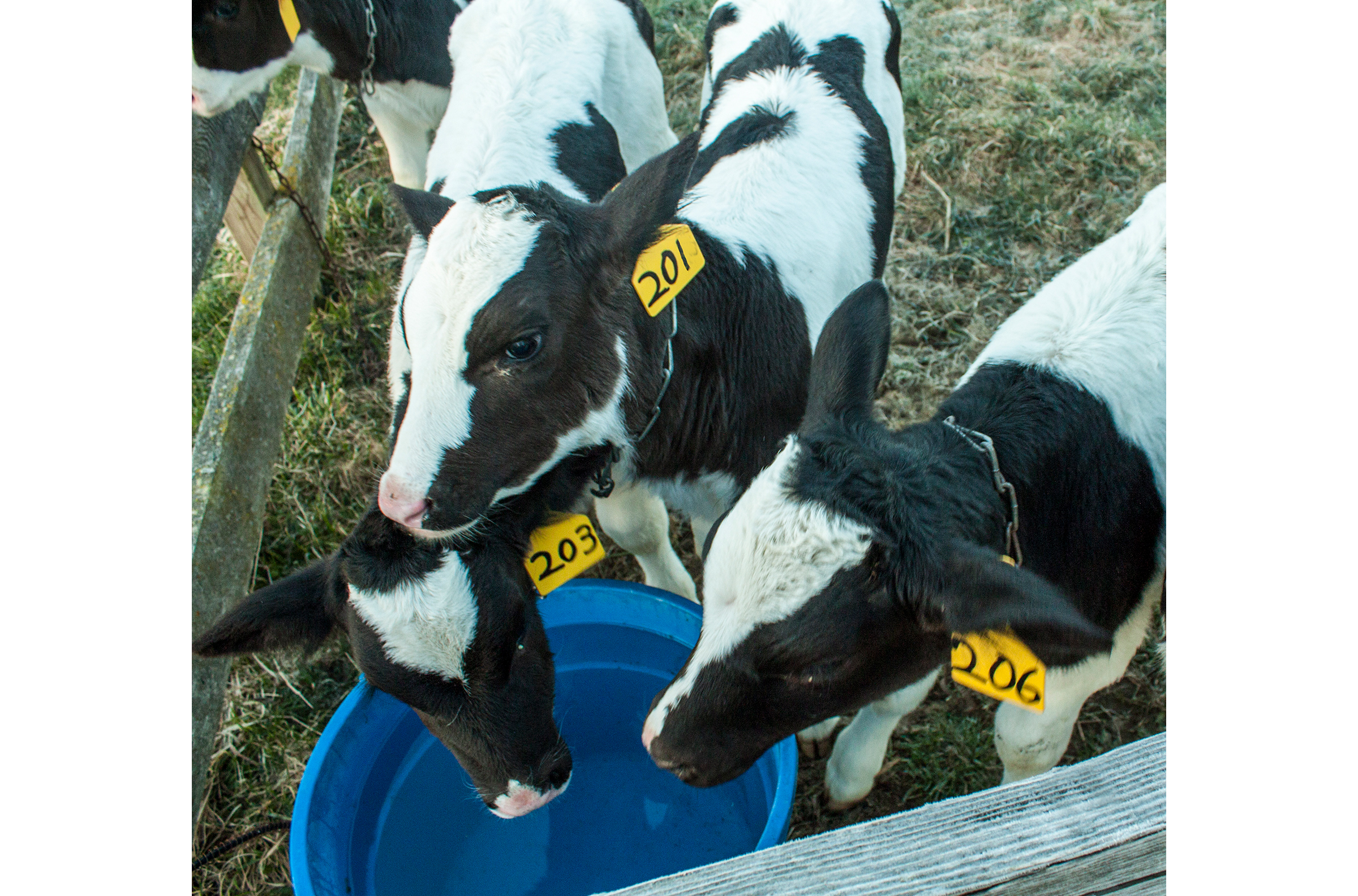
Lima Bean and his buddies have just had their ear tags inserted in this photo. The last number on the tag indicates who is older than who. Lima Bean is the oldest calf in his age group and was the first one to arrive on the farm, so he receives number 201.
Lima Bean lives with twenty-five other boy calves his age. To keep young bulls safe and to minimize fighting, farmers modify the body of each calf in two ways. First, they remove his horn buds. Horn buds are the spots on the calves’ heads where horns will emerge. By removing the buds when the calves are young, the farmers prevent the calves from ever growing horns, which could injure other animals or farmers.
The second change is castration. You might have heard the term “neutered” or “fixed” used with dogs or cats. The term farmers use is “castrate” or “de-ball.” All these terms mean the same thing—the function of the testicles is stopped. That means the calf no longer makes sperm or testosterone (the male hormone). A castrated bull has a special name: he is called a steer. A steer is less aggressive than a bull, and his meat is tastier.

There are different ways to castrate a calf, but Snug Valley Farm uses a bloodless technique involving a thick rubber band. The rubber band is placed around the calf's testicles and scrotum, cutting off the blood supply. Without a blood supply, the testicles and scrotum shrivel up and disappear.
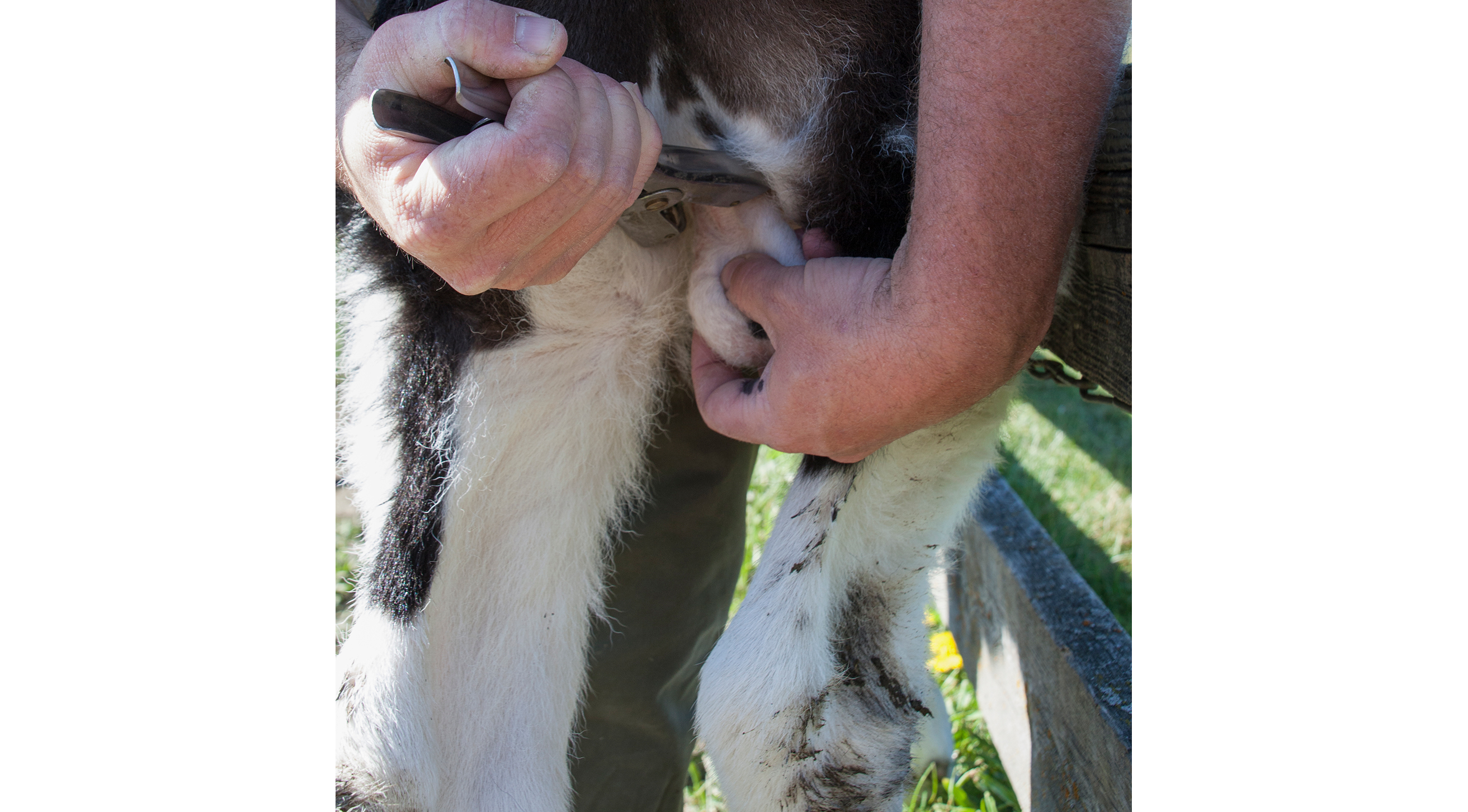
Now Lima Bean is three months old, and he no longer needs to drink milk. He is old enough to move to a pasture where he and his buddies eat grass all day long. Here he meets some of the full-grown steers, known as the “Big Boys,” for the first time. The photo below shows how big Lima Bean will be when he grows up. To prevent bullying, the Nottermanns keep calves of the same age together.
